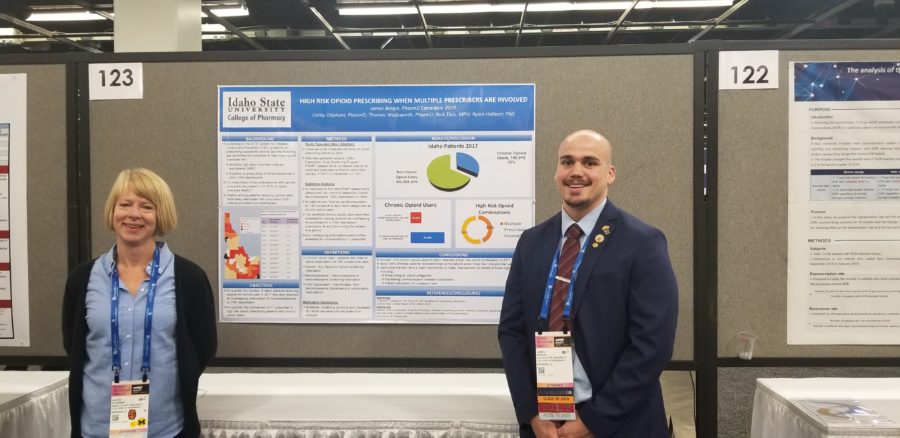Quarter of Idahoans prescribed opioids for chronic pain at risk for overdose, say ISU researchers
Published at | Updated at
IDAHO FALLS — An Idaho State University professor and doctorate student recently discovered a quarter of Idaho patients who take prescription opioids for chronic pain could be in danger of overdose because of the combination of drugs they were prescribed.
Catherine Oliphant, professor of pharmacy practice at ISU, and doctor of pharmacy candidate James Berain made their discovery by studying the 2017 prescription records of 301,975 Idaho patients from the Prescription Drug Monitoring Program, which helps doctors and pharmacists track prescription drug use throughout the country.
Oliphant and Berain presented their findings at the American Society of Health-System Pharmacists Midyear Clinical Meeting and Exhibition in Anaheim, California, on Dec. 4.
Berain, who currently works for Intermountain Health Care, got interested in this project after seeing so many people come into hospitals for opioid overdoses.
The overdose danger Oliphant and Berain described arises from patients who use opioids for chronic illnesses or pain, and are then prescribed other controlled substances. Their study specifically mentioned benzodiazepines, also known as benzos. Benzos are used as sedative or anxiety-reducing medications.
According to the National Institute on Drug Abuse, opioids and benzos are dangerous together because they both relax the user and suppress breathing, which can lead to the breathing stopping entirely.
Fifty-six percent of the combined prescriptions were written by one prescriber, which Berain said was surprised him the most about their research; because the dangers of prescribing benzos and opioids are well-known in the clinical world, he had thought most doctors and pharmacists would look for other options first.

Berain and Oliphant found that 44 percent of the combined prescriptions came from more than one prescriber.
“Patients with chronic pain are often under the care of several different physicians,” said Oliphant in an article from ISU. “This co-management can lead to patients receiving unintentional prescription combinations that put them at higher risk for an opioid overdose.”
Berain and Oliphant plan to continue their research by looking at data from the Prescription Drug Monitoring Program from the last three years and creating a trend line to see if opioid/benzos combination prescriptions are going up or down. After they have done more research, they hope to publish.
Berain said there is no one solution for patients who suffer from chronic pain (handled with opioids) and insomnia or anxiety (handled with benzos). Doctors should look into other options before they prescribe patients these two drugs.
“(Opioids) are good for our acute pain, but there’s not a good amount of evidence that they benefit patients for a longer period of time,” Berain said.
Oliphant also said patients should be educated in their own care and in what doctors are giving them. One way to prevent overdose deaths is to use noloxone, a drug that can reverse opioid overdose effects. It’s expensive, but it can be prescribed by a pharmacist.
If someone in your house takes opioids, Oliphant suggests having naloxone on hand in case of an accidental overdose. She said people who have more questions about naloxone should talk with their pharmacist.
Berain added, “Have that conversation. Pharmacists are easily available, and they can have a good conversation with you on that.”
There were 119 opioid-related overdose deaths in Idaho in 2016. That’s 7.4 deaths per 100,000 people, lower than the national average of 13.3 deaths. Of those, 25 of those deaths were from heroin — 77 were prescription drug-related deaths.


